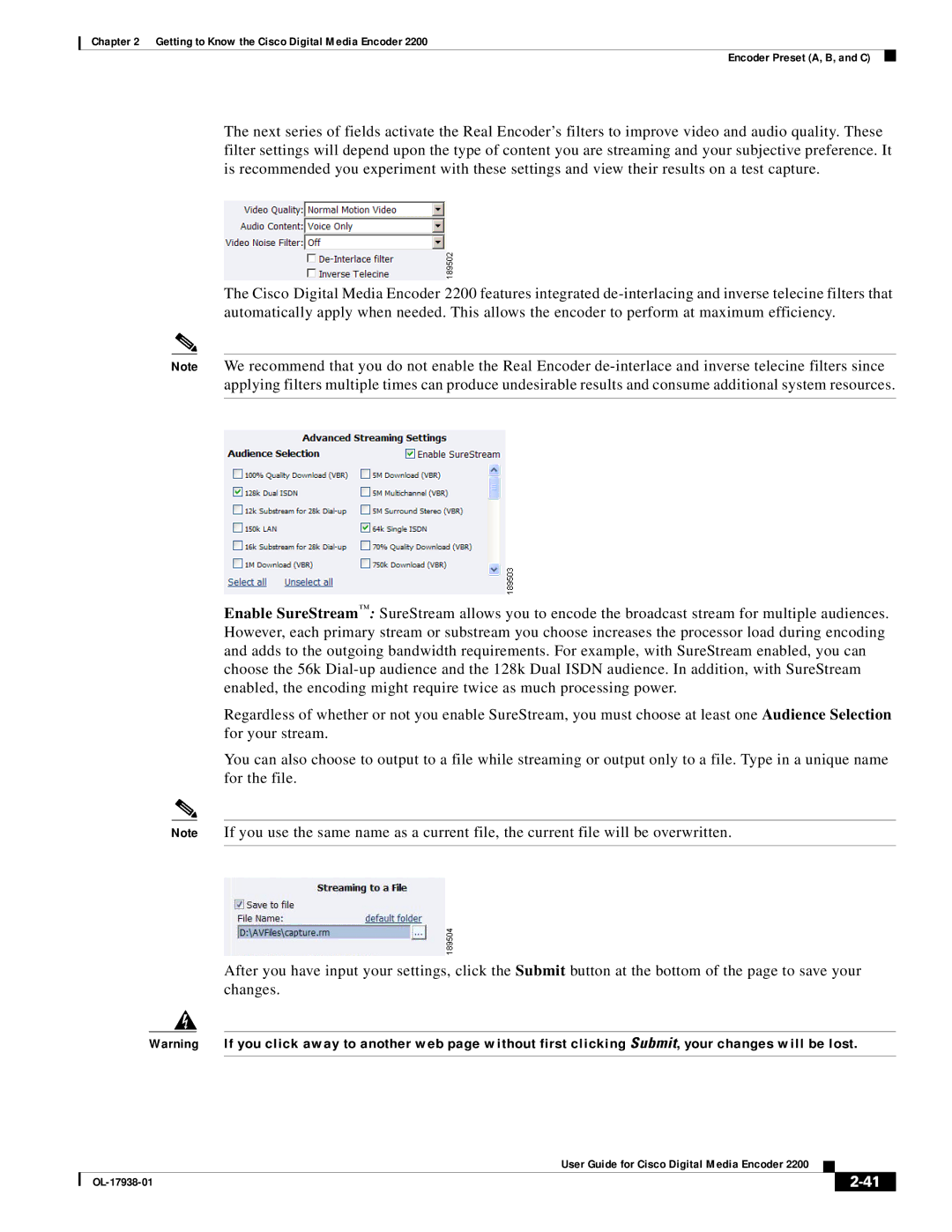
Chapter 2 Getting to Know the Cisco Digital Media Encoder 2200
Encoder Preset (A, B, and C)
The next series of fields activate the Real Encoder’s filters to improve video and audio quality. These filter settings will depend upon the type of content you are streaming and your subjective preference. It is recommended you experiment with these settings and view their results on a test capture.
The Cisco Digital Media Encoder 2200 features integrated
Note We recommend that you do not enable the Real Encoder
Enable SureStream™: SureStream allows you to encode the broadcast stream for multiple audiences. However, each primary stream or substream you choose increases the processor load during encoding and adds to the outgoing bandwidth requirements. For example, with SureStream enabled, you can choose the 56k
Regardless of whether or not you enable SureStream, you must choose at least one Audience Selection for your stream.
You can also choose to output to a file while streaming or output only to a file. Type in a unique name for the file.
Note If you use the same name as a current file, the current file will be overwritten.
After you have input your settings, click the Submit button at the bottom of the page to save your changes.
Warning If you click away to another web page without first clicking Submit, your changes will be lost.
|
| User Guide for Cisco Digital Media Encoder 2200 |
|
| |
|
|
| |||
|
|
|
|
| |
|
|
|
| ||
